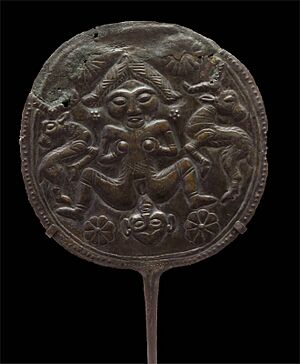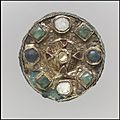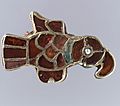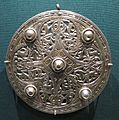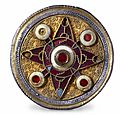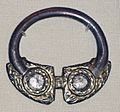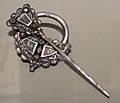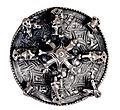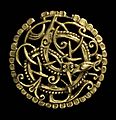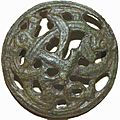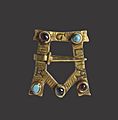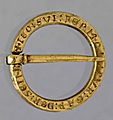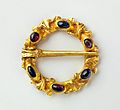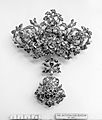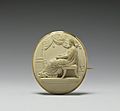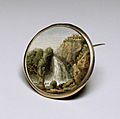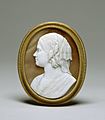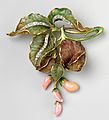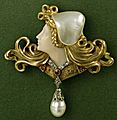Brooch facts for kids
A brooch is a type of jewelry that you can attach to your clothes. Brooches are often made from metal like silver or gold. Sometimes they are made of bronze. Many brooches are also decorated with shiny gemstones.
People have worn brooches for a very long time. The first ones we know about are from the Bronze Age. Because brooch styles changed often, they help historians figure out the age of old items. Many old European brooches found by archaeologists are called fibulae.
Contents
Fibulae: Ancient Clothing Clasps
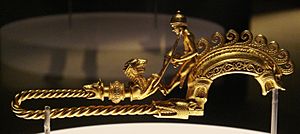
A fibula (say "FIB-yoo-la") is an old type of ornamental clasp. It was used by people like the Romans, Greeks, Germanic peoples, and Celts. These clasps were popular in Europe from the early Bronze Age until about 800 AD.
Fibulae looked a bit like a large safety pin. Their main job was to hold clothing together. They came in many different shapes and designs. These designs often showed who the wearer was. They could tell you about a person's background or social class.
Historians find fibulae very useful. By studying their different styles, they can often figure out how old other items found nearby are. This helps them learn more about ancient times.
Celtic Brooches: Beautiful Designs
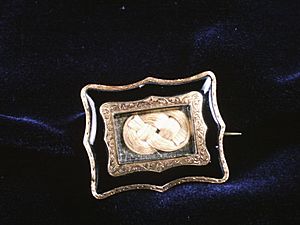
In early medieval Ireland and Scotland, a special style of brooch developed. These were called penannular brooches. They were known for their very detailed and fancy decorations. One of the most famous examples is the Tara Brooch. These brooches are considered some of the most beautiful ever made.
Hair and Portrait Brooches: Personal Keepsakes
From the 1700s through the Victorian era, brooches became very personal. It was popular to put hair or tiny portraits inside them. This trend started as a way to remember people who had passed away. Later, it became a way to keep memories of living loved ones close.
Sometimes, real human hair was placed inside the brooch. Other times, it was braided into a band that the brooch clasped onto. Some miniature portraits even used ground human hair as part of the paint! Some brooches could even swivel. One side might show a portrait, and the other a lock of hair. This hair could even be shaped with small stones to look like a tiny flower bouquet.
Images for kids
-
Wing Brooch, 2nd century AD, Metropolitan Museum of Art
See also
 In Spanish: Broche para niños
In Spanish: Broche para niños



